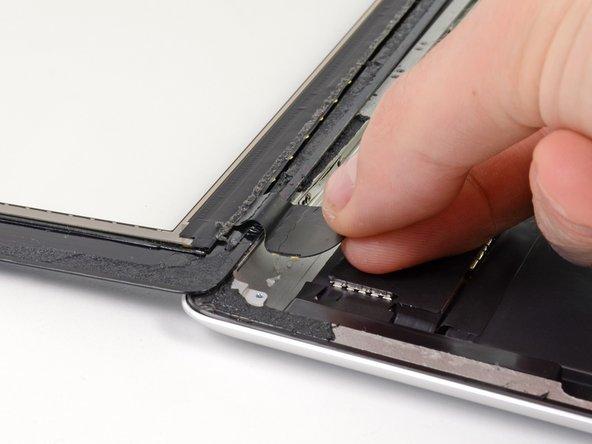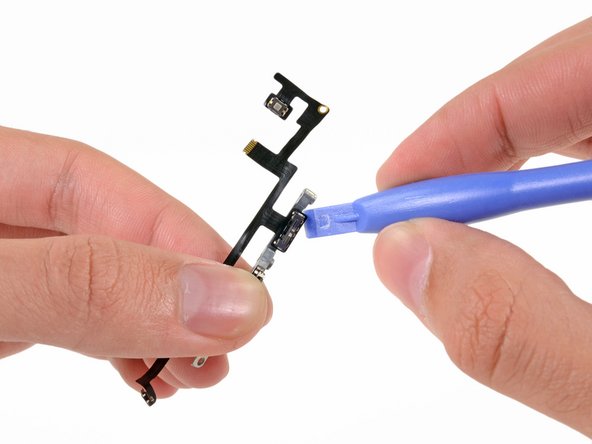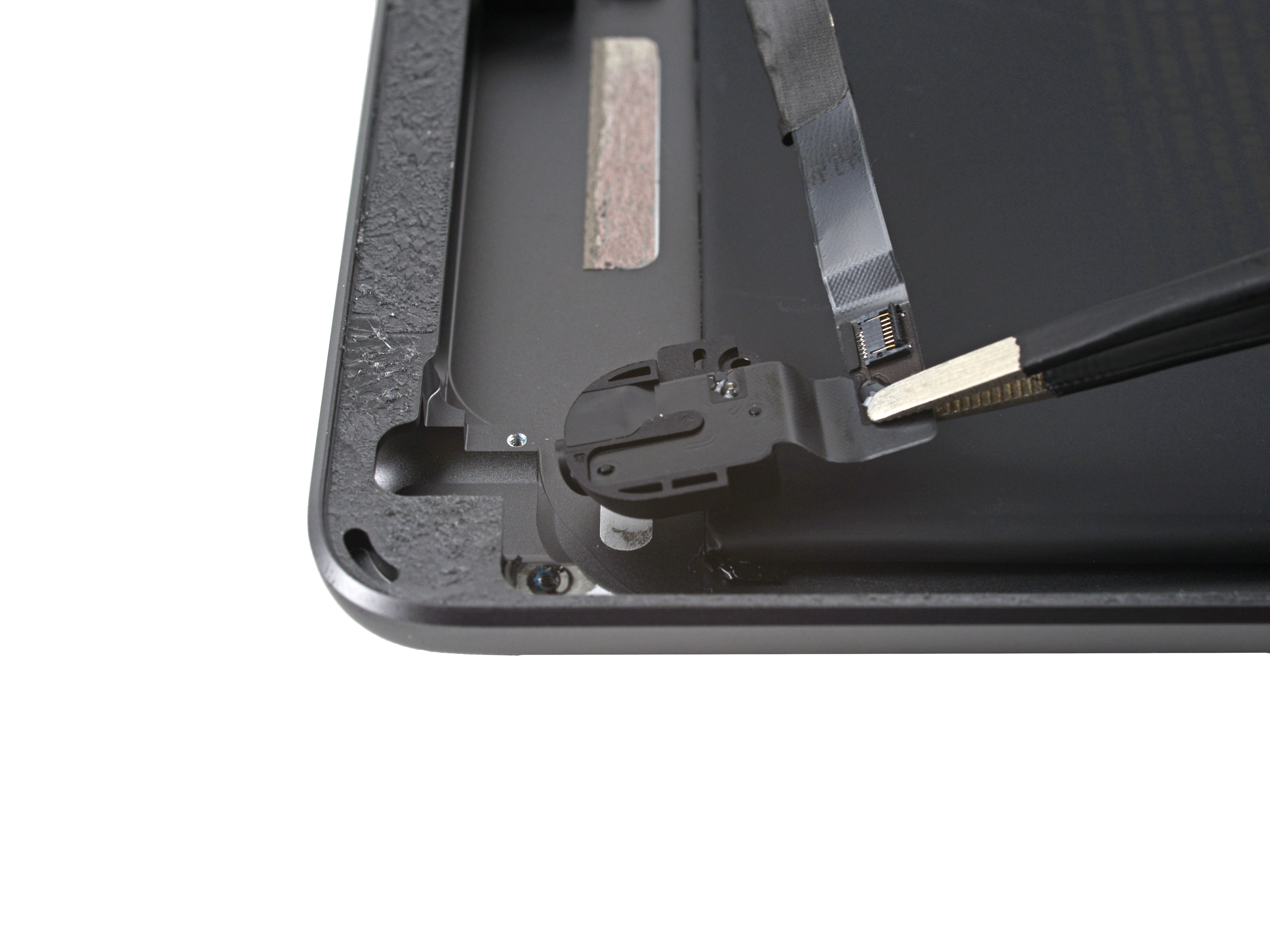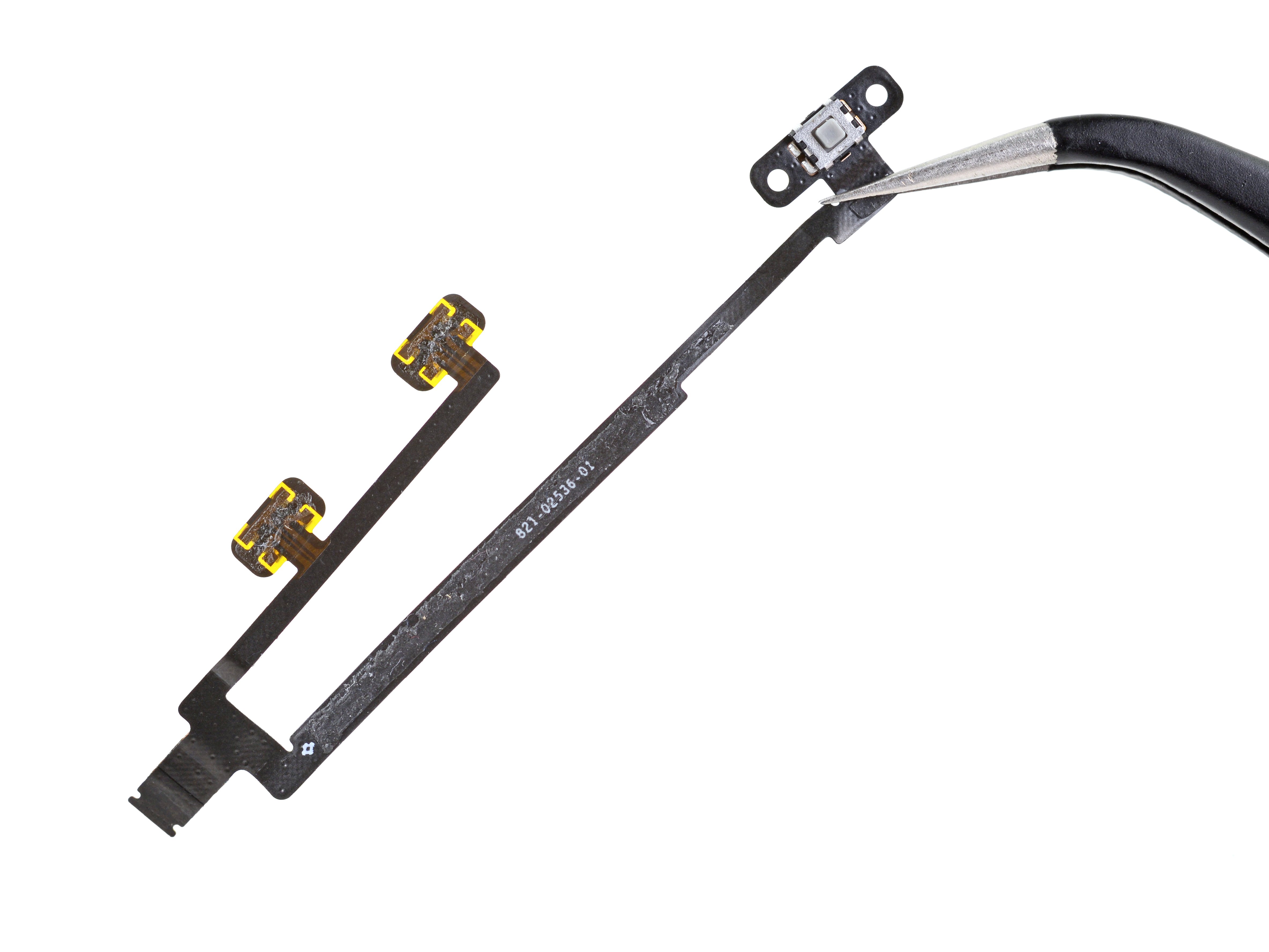How to Replace iPad 4G Power & Volume Button Tutorial
Duration: 45 minutes
Steps: 67 Steps
Hey there! Just a heads-up: if you hit a snag while fixing your device, don’t sweat it. If you need a hand, you can always schedule a repair. We’ve got your back!
Having a tough time getting your iPad to wake up or crank up the volume? No worries! This guide will walk you through replacing the Power & Volume Button ribbon cable on your third generation iPad with ease. Let’s get that device back in action! And remember, if you need help, you can always schedule a repair.
Step 1
Before you dive into the fun part, give your microwave a quick clean! Trust us, you don’t want any leftover gunk getting cozy with your iOpener.
– Pop the iOpener right in the middle of the microwave like it’s the star of the show!
Step 2
Hey there! Just a friendly reminder to keep an eye on the iOpener during your repair. If it gets too hot, it might get a little dramatic and burst on you. Let’s keep it cool and below 100˚C (212˚F)!
If the iOpener looks like it’s been hitting the gym and is swollen, steer clear of touching it!
If the iOpener is still too toasty to handle, feel free to keep using it while it cools down a bit more before you give it another heat-up. A well-heated iOpener should stay nice and warm for about 10 minutes.
– Give that iOpener a quick spin in the microwave for thirty seconds to heat things up!
– As you work your magic on the repair, keep the iOpener cozy by popping it back in the microwave for another thirty seconds whenever it starts to cool down.
Step 3
Caution! The iOpener is going to be super toasty, so handle it with care. An oven mitt might just be your best buddy for this job!
– Carefully take the iOpener out of the microwave, making sure to grip one of the flat ends to keep your fingers safe from the toasty center.
Step 4
If you’re not rocking a microwave, no worries! Just heat up your iOpener by dunking it in some boiling water. You’ve got this!
– Grab a pot or pan and fill it with enough water to completely cover your iOpener. We’re aiming for a nice warm bath here!
– Bring that water to a rolling boil, then turn off the heat. We’re not cooking dinner, just prepping for some serious iOpener action!
– Carefully place your iOpener in the hot water for about 2-3 minutes. Make sure it’s fully submerged and soaking up all that heat.
– Using tongs (safety first!), lift the warmed iOpener out of the water. It’s about to get cozy!
– Give the iOpener a good towel dry to ensure it’s all set for action.
– And there you have it! Your iOpener is all warmed up and ready to help you out. If it needs a little more heat, just repeat the process: heat the water, turn off the heat, and let the iOpener soak for another 2-3 minutes. If you need help, you can always schedule a repair.
Step 5
– Grab a SIM eject tool or a trusty uncoiled paperclip, and gently pop out that SIM tray like a pro!
Step 6
– Gently slide the SIM tray out of its cozy little spot and take it out of your iPad.
– If you’re swapping out the SIM card, just pop it out of the tray and slide in the shiny new one!
Step 7
Put on those safety glasses to keep your eyes safe and sound, and watch out for that LCD screen – it’s more delicate than it looks!
– If your display glass is cracked, let’s keep that breakage under control and avoid any accidental ouchies during your repair by applying some tape to the glass.
– Grab some clear packing tape and lay down overlapping strips over your iPad’s display until it’s completely covered. You’ll be a tape artist in no time!
– Try to follow the rest of the guide as best as you can. Just a heads up, once the glass starts to break, it might keep cracking as you work. You may need to get a metal prying tool to help scoop out the pieces. You got this!
Step 8
Hey there! Just a heads up, since you’ll be dealing with some broken glass during this process, we highly suggest rocking a pair of safety glasses to keep those pesky shards from becoming a surprise party for your eyes.
– Place the iOpener flat on the right edge of your iPad, giving it a little love tap to ensure it’s making solid contact with the surface.
– Give it about 90 seconds to work its magic before you dive into opening the front panel.
Step 9
Getting that wedged tip of the opening tool between the glass and plastic might need a little bit of elbow grease. Just take your time and be gentle, giving the plastic tool a little wiggle as you go. You’ve got this!
– Hey there! So, there’s this sneaky little gap in the adhesive ring at the upper right corner of your iPad, about 2.0 inches (~5 cm) down from the top. Let’s take advantage of this little flaw!
– Next, line up your tool with the mute button. Gently slide the tip of a plastic opening tool into that gap between the front glass and the plastic bezel. Just nudge in the very tip of the tool, just enough to widen that crack a bit.
Step 11
– With the plastic opening tool snugly nestled between the front glass and the plastic bezel, gently slide a plastic opening pick into the tiny gap right beside it. You’ve got this!
Step 12
– Take out the plastic opening tool from your iPad and gently slide the opening pick a bit further under the front glass, going about 0.5 inches deep. You’re doing great!
Step 13
– As you tackle the adhesive on the right side of your iPad, give that iOpener a little heat love again and pop it back on the bottom edge of the iPad.
Step 14
That adhesive is no joke, and you might need to put in a bit of muscle to get things moving. Just take your time and be gentle with it.
If you spot the tip of the opening pick sneaking under the front glass, give it a gentle tug to pull it out a smidge. While diving deep with the pick won’t cause any harm, it might leave some sticky adhesive marks on the LCD. Just a heads up!
– While the iOpener warms up the bottom edge, start peeling away the adhesive from the right side of your iPad.
– Gently slide the opening pick down the edge of the iPad, freeing the adhesive as you go along.
Step 15
As you work on your iPad, you might find it helpful to slide that warm iOpener back onto the right edge while you peel off the adhesive. Just keep in mind, this little move depends on how cool your iPad has gotten while you were busy tinkering.
– If the opening pick is giving you a hard time and sticking to the adhesive, just give it a little ‘roll’ along the side of the iPad to keep on releasing that pesky adhesive.
Step 16
– Before you whip out that first opening pick from the bottom corner of your iPad, slide a second pick under the right edge of the front glass to prevent the adhesive from making a sticky comeback.
– Give your iOpener a quick reheat, and then place it on the top edge of the iPad.
Step 17
Hey there! Just a heads up: the Wi-Fi antenna is snugly attached to the bottom right edge of your iPad’s rear case with screws and a cable. Since it’s positioned the way it is, be super careful while working on it—otherwise, you might accidentally cause some permanent damage to the antenna. Let’s keep that Wi-Fi strong!
– Alright, folks! It’s time to proceed with a sprinkle of caution.
– You’ll need to carefully peel away the adhesive that’s holding the antenna snug against the front panel. Just remember, we want to keep those delicate connections at the bottom of the iPad safe and sound. Take your time and follow the upcoming steps with care!
Step 18
Hey there! Just a friendly reminder: avoid sliding the pick beyond the bottom right corner. Going too far might give your Wi-Fi antenna a little surprise, and we definitely don’t want that!
– Gently glide the opening pick around the bottom right corner of your iPad to release that pesky adhesive. You’ve got this!
Step 19
As you glide that opening pick along the bottom right edge of the front panel, keep in mind that the Wi-Fi antenna is lurking close to the corner. If you’re not careful with the adhesive, you might accidentally give it a little too much freedom and sever it. Let’s keep that antenna happy, shall we?
Keep that pick in a cozy spot under the front glass—just pull it out a smidge so about 1/8″ (3 mm) of the tip stays tucked in. You’ve got this!
– Gently glide the opening pick along the bottom edge of the iPad to free the adhesive near the Wi-Fi antenna. You’ve got this!
Step 20
– Alright, you’ve made it past the Wi-Fi antenna—about 3 inches from the right edge, or just next to the home button. Now, it’s time to slide that opening pick back in, all the way to its full depth.
– Give that pick a little nudge to the right, and watch as it frees the adhesive holding the Wi-Fi antenna snug against the front glass. You’re doing great!
Step 21
Keep the iOpener’s heating time to just one minute at a time, and remember to give it a breather of at least two minutes before warming it up again.
– Keep on peeling that adhesive along the bottom of the iPad! Gently pull the opening pick out far enough to navigate around the home button, and then slide it back in, going to a depth of about 1/2 inch (10 mm) once you’ve passed the home button. You’re doing great!
Step 22
– Keep peeling back that adhesive along the bottom edge of the iPad until it’s all gone. You’re doing great!
– Once you’ve got a good gap, leave the opening pick snugly in place near the home button to hold things steady.
Step 23
– Pop the iOpener in the microwave for a quick heat-up and place it on the left edge of your iPad to get that adhesive nice and toasty in that area.
Step 24
If the adhesive is feeling a bit too cool for comfort, just swap in a fresh iOpener along the top edge and keep on going. And if your iOpener has lost its heat, no worries—give it a quick reheat and get back to work!
– Gently glide the opening pick along the top edge of your iPad, giving it a little tug to navigate around the front-facing camera bracket.
– This section has some seriously sticky adhesive, so you might need to put in a bit of elbow grease. Take it slow and steady, and keep your fingers safe while you work on your iPad.
– If the opening pick gets a bit stuck in that gooey adhesive, just give it a little ‘roll’ as shown in step 9.
Step 25
If the adhesive is feeling nice and toasty, go ahead and take the iOpener off the iPad for some easy maneuvering. But if it’s still a bit too clingy, just warm up that iOpener again and rest it on the left edge while you get to work.
– Keep peeling away that stubborn adhesive along the top edge of your iPad, and gently maneuver the opening pick around that top left corner like a pro!
Step 26
The digitizer cable hangs out about 2″ (50 mm) from the bottom of your iPad. Once you reach around 2.25″ (60 mm) from the bottom, it’s time to stop sliding that pick!
– Gently slide the opening pick down the left side of the iPad, and watch as the adhesive lets go. No worries if it’s a bit thin here – that’s just because of the digitizer hanging out along the whole left edge. Just keep the pick shallow (no more than 1/2 inch or 10 mm) to avoid any mishaps with the digitizer. You’re doing great!
Step 27
Be super careful! The digitizer cable is hanging out just about an inch (25 mm) from the bottom of the iPad. Take your time and watch out for that cable—let’s keep it intact!
– With the trusty opening pick still nestled under the bottom edge of your iPad, gently coax the adhesive loose at the bottom left corner. You’re doing great!
Step 28
– Grab one of those handy opening picks and gently lift the bottom right corner of your iPad. Once you’ve pried it up, use your fingers to hold it steady. You’ve got this!
Step 29
Watch out for any leftover sticky stuff that might still be clinging on, and grab an opening pick to slice through any adhesive that’s keeping the front panel in place.
– Grab your iPad by the top and bottom right corners, and give that front glass a gentle twist to lift it away from the device.
– When you’re putting everything back together, don’t forget to pamper your LCD! Use a microfiber cloth and a blast of compressed air to wipe away any dust or fingerprints before sealing it up with the glass.
Step 30
– Unscrew the four 2 mm Phillips #00 screws that are holding the LCD snugly against the aluminum frame. You’ve got this!
Step 31
– Grab your trusty plastic opening tool or spudger and gently nudge the right edge of the LCD out of the iPad.
– Now, swing that LCD around on its left edge and let it rest on the front panel like it’s taking a well-deserved break.
Tools Used
Step 32
– Grab your trusty spudger and gently peel back the tape that’s covering the LCD ribbon cable connector. You’re doing great!
Tools Used
Step 33
– Gently lift the retaining flap on the LCD ribbon cable ZIF connector. You’re doing great!
– Using your fingers or a trusty pair of tweezers, carefully pull the LCD ribbon cable out of its cozy socket on the logic board.
– If your iPad decides to play hard to get and the LCD screen stays black after reconnecting the ZIF connector, give it a little nudge by holding down the power button and home button for at least ten seconds until the Apple logo makes its grand appearance.
Step 34
– Gently lift the LCD off the front panel without giving it any unwanted attention.
Step 35
– With a trusty spudger in hand, gently lift the tape that’s holding the touchscreen ribbon cable snugly against the logic board. You’ve got this!
Tools Used
Step 36
– Lift the retaining flap on both touchscreen ribbon cable ZIF connectors with a gentle touch.
Step 37
– Grab your trusty spudger and gently slide the flat end under the digitizer ribbon cable to break that adhesive seal. You’ve got this!
– Now, with a steady hand, pull the digitizer ribbon cable straight out from its cozy little sockets on the logic board. Easy peasy!
Tools Used
Step 38
– Gently lift the touchscreen ribbon cable, then grab your trusty spudger and use its flat end to carefully break the adhesive grip holding that cable to the rear aluminum case. You’re doing great!
Tools Used
Step 39
– With a gentle tug, ease that touchscreen ribbon cable out of its cozy little spot in the aluminum frame. You’ve got this!
– Now, carefully lift away the front panel from your iPad. It’s like peeling off a sticker—just a bit more important!
Step 40
– Gently peel back that piece of electrical tape that’s keeping the headphone jack assembly cable connector under wraps. It’s time to let it breathe!
– Now, grab your trusty spudger and carefully flip up the retaining flaps on both ZIF connectors that are holding the headphone jack cable to the logic board. You’re doing great—keep it up!
Tools Used
Step 41
– Gently slide the flat end of a spudger under the headphone jack assembly cable to free it from the adhesive that’s keeping it snug against the rear aluminum frame.
– Now, with a steady hand, pull the headphone jack assembly cable straight out of its cozy socket on the logic board. You’ve got this!
Tools Used
Step 42
– Gently peel away the tape that’s snugly holding down the SIM board cable ZIF connector. You’ve got this!
– Next up, flip that retaining flap on the SIM board cable ZIF connector. It’s time to set things free!
– Now, with the spudger’s tip, carefully pull the SIM board cable straight out of its cozy socket on the logic board. Easy peasy!
Tools Used
Step 43
– Go ahead and take out those three 1.75 mm Phillips #00 screws that are holding the SIM board snugly to the aluminum frame. You’ve got this!
Step 44
As you gently move the headphone jack assembly cable aside, remember to take it easy on the headphone jack itself—yanking too hard might just send it packing!
– Keep the headphone jack assembly cable out of the way and gently take out the SIM board from the iPad. You’ve got this!
Step 45
– Gently peel off the adhesive tape that’s holding the headphone jack assembly in place and say goodbye to that sticky barrier!
Step 46
– Take out the lone 2.6 mm Phillips #0 screw that’s holding the camera cable to the headphone jack assembly. You’ve got this!
Step 47
– Grab your trusty spudger and gently wiggle the flat end to pop the front-facing camera out of its snug little home in the headphone jack assembly. It’s like a mini adventure for your camera!
– Now, while you’re still holding onto that spudger, slide it to the right. This will set free the adhesive that’s been keeping the camera cable cozy. Easy peasy!
Tools Used
Step 48
– Grab your trusty spudger and gently lift the retaining flap on that microphone cable ZIF connector. You’ve got this!
– Now, slide the spudger under the microphone ribbon cable and carefully pop it out from its ZIF connector. Easy peasy!
– Give the spudger a little nudge to the left to release the adhesive that’s keeping the microphone ribbon cable stuck to the headphone jack assembly. You’re almost there!
Tools Used
Step 49
– Gently slide the flat end of your spudger to lift the antenna connector cable out of its cozy spot on the headphone jack assembly board. You’ve got this!
Tools Used
Step 50
– Gently lift the retaining flap that holds the volume/power button ribbon cable connector to the headphone jack assembly board. You’re almost there!
– Carefully disconnect the volume button ribbon cable from its ZIF connector. You’ve got this!
Step 51
– Time to get those screws out from the headphone jack assembly! Grab your trusty screwdriver and let’s make it happen!
Step 52
– Gently grasp the ribbon cable of the headphone jack assembly and give it a nice, steady pull towards the bottom of the iPad, keeping it parallel to the device. You’re doing great!
Step 53
– With both hands, gently grab the headphone jack assembly and carefully pull it away from the iPad, keeping an eye out for any cables that might try to tag along for the ride.
Step 54
The two screws on the top are tilted into the aluminum frame. Remember to keep that screwdriver aligned with the screw for a smooth operation!
– Unscrew those pesky screws holding the power & volume button cable to the aluminum frame. You’ve got this!
Step 56
– Carefully take out the lone 2.6 mm Phillips #00 screw that’s keeping the volume button frame snug against the aluminum frame. You’ve got this!
Step 57
– Gently slide the edge of a plastic opening tool under the sleep/wake sensor, taking care not to harm that delicate cable. It’s like giving your device a little tickle!
– Now, maneuver the plastic opening tool around the sensor to gently break the adhesive seal. You’re doing great, keep it up!
Step 59
– Grab the spudger and use its pointy tip instead of the wide edge to gently peel back the adhesive hiding beneath the volume button section of the ribbon cable. You got this!
Tools Used
Step 61
– With the spudger tip still nestled under the ribbon cable, gently coax the power button out of its cozy home in the aluminum frame.
Tools Used
Step 62
– With both hands ready for action, gently tug on the power & volume button cable while carefully popping the volume buttons and lock switch out of their cozy spots in the aluminum frame.
– Once you’ve freed them, lift the power & volume button cable out of the rear aluminum case like a pro!
Step 63
– Gently slide the tip of your trusty plastic opening tool beneath the top edge of the power button.
– Carefully lift the top part of the power button away from its bracket, like you’re giving it a little nudge to say hello.
Step 64
– Now let’s give some love to the underside of the power button—just do what you did before!
– Gently lift and take out the power button bracket from the power & volume button assembly. You’ve got this!
Step 65
– Gently slide the tip of your trusty plastic opening tool under the top side of the rotation lock/mute switch.
– Carefully glide the tool downwards to pop the topside of the rotation lock/mute switch free from its bracket.
Step 66
– Gently slide the tip of your trusty plastic opening tool under the top volume rocker and give it a little nudge upwards to pop it free from the volume buttons bracket. You’ve got this!
– Now, just repeat that same slick move for the bottom volume rocker to detach it from the volume buttons bracket. Easy peasy!
Step 67
– Gently lift and detach the ribbon cable for the power and volume buttons. Keep it steady, you’re doing great!
















































































































































